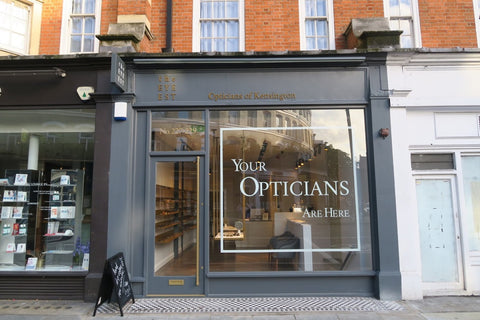Reasons why you can’t see while driving at night
Night-time driving is considered riskier than driving during the day; indeed, in the UK the accident rate is reportedly three times greater in the dark than in daylight. But what is it that affects your ability to see at night, and what can you do about it?
Headlight glare
One of the main reasons it is more difficult to drive at night is due to glare, this can be from the headlights of oncoming vehicles or streetlights. Glare glare from the headlights of oncoming vehicles. This can distract you, making it harder to sport hazards, junctions and bends, and can even reduce your reaction time. As we age, our eyes take longer to react to light changes, and we may experience problems defining objects, colours and contrasts in low light situations.
If you wear glasses, one way to help with this is by choosing an anti-glare or anti-reflective coating for your glasses lenses. This can reduce the glare from headlights and improve your visual comfort. Additionally, newer cars often come with auto-dimming rear view mirrors or rear privacy glass, both of which help to reduce the glare from the headlights of vehicles behind you.
Presbyopia - difficulty seeing nearby objects
If you’re struggling to see your dashboard, sat nav or other instruments in your vehicle clearly you may be developing presbyopia. This inability to see objects up close typically develops after the age of 40 and makes night-time driving a challenge. However, a pair of glasses is often enough to rectify the problem, so be sure to make an appointment at your local opticians if you think you may be affected by presbyopia.
Myopia - difficulty seeing distant objects
If road signs are starting to look blurry or objects farther away are lacking definition, you may have myopia. When it’s dark outside, other road users such as cyclists are harder to spot and the reflected light from road signs can make them trickier to read. Having myopia will exacerbate these issues, making it dangerous for you to drive at night. Again, a sight test and eye health check can help you identify myopia and it can be treated with prescription glasses.
Astigmatism - streaks and blurs
Astigmatism is when your eyeball is shaped like a rugby ball instead of being round. It can affect your eyesight at night, making lights seem streaky and increasing the glare or halo effect you experience from them. Even your lit dashboard can seem harder to read. A routine eye exam can identify astigmatism and provide a solution such as corrective glasses.
Night-time driving safety
The best way to ensure you remain safe while driving at night is to have your eyes tested on a regular basis. Optical services are not only useful for checking your sight, they’ll also ensure your overall eye health is good and identify any potential issues before they become a problem. Your optometrist will also prescribe the right glasses to ensure your vision stays crisp and clear.
If you’re experiencing problems during night-time driving, contact The Eye Establishment today for an expert sight and eye health check.
